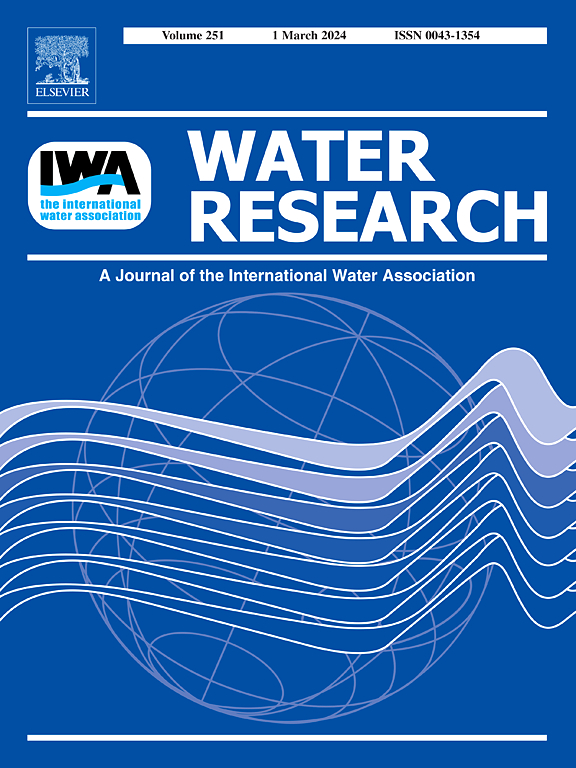Evaluation of multilayer co-extrusion film and other three plastic membranes as passive samplers for determination of polyhalogenated carbazoles in water
IF 12.4
1区 环境科学与生态学
Q1 ENGINEERING, ENVIRONMENTAL
引用次数: 0
Abstract
Passive sampling methods can provide valuable insights for monitoring hydrophobic organic compounds (HOCs) in aquatic environments. As the list of target HOCs expands, there is an increasing demand for passive samplers that can detect a broader range of these compounds. This study aimed to assess the efficacy of a three-layer co-extruded polyethylene/ethylene vinyl acetate (TLC-EVA) film alongside three existing materials (polyethylene (PE), polydimethylsiloxane (PDMS), and poly(methyl methacrylate) (PMMA)) for passive sampling of carbazole and five halogenated carbazoles (PHCZs), a group of dioxin-like chemicals, in water. The films were calibrated through batch experiments to determine the partition coefficients between the polymer and water (KPW). The performance of the samplers and the presence of PHCZs were evaluated through 7- and 14-day exposures in the Xiaoyi River, which flows through Qufu City, China. The logKPW values varied significantly among the compounds and were generally consistent across the four films, ranging from 2.73 to 4.14 for EVA, 2.65 to 4.21 for PE, 2.85 to 3.98 for PMMA, and 2.62 to 4.22 for PDMS. These findings indicate that the films can effectively function as passive samplers for PHCZs. Additionally, a comparison of logKPW results with physicochemical parameters (logKOW and logKOC) highlighted the negative impact of halogen substituents and steric hindrance on sorption, particularly for 1,3,6,8-tetrabromocarbazole. The passive sampling reached equilibrium within the 7-day exposure period, with all PHCZs detected in the river water. Increased concentrations at urban and wastewater treatment plant outlet sampling sites suggested specific sources of PHCZs. Our results advocate for the application of multilayer co-extrusion films as a novel material for passive sampling of HOCs.

多层共挤膜和其他三种塑料膜作为水中多卤代咔唑测定被动进样剂的评价
被动采样方法可以为水生环境中疏水有机化合物(hoc)的监测提供有价值的见解。随着目标hoc列表的扩展,对能够检测更广泛的这些化合物的被动采样器的需求不断增加。本研究旨在评估三层共挤聚乙烯/乙烯醋酸乙烯(TLC-EVA)薄膜与三种现有材料(聚乙烯(PE)、聚二甲基硅氧烷(PDMS)和聚甲基丙烯酸甲酯(PMMA))一起用于水中咔唑和五种卤代咔唑(phcz)(一组二恶英样化学物质)的被动采样的效果。通过批量实验对膜进行校准,以确定聚合物与水之间的分配系数(KPW)。通过在流经中国曲阜市的孝义河中暴露7天和14天,对采样器的性能和phccs的存在进行了评估。四种膜的logKPW值差异显著,EVA的logKPW值为2.73 ~ 4.14,PE的logKPW值为2.65 ~ 4.21,PMMA的logKPW值为2.85 ~ 3.98,PDMS的logKPW值为2.62 ~ 4.22。这些发现表明,这些薄膜可以有效地作为phcz的被动采样器。此外,logKPW结果与物理化学参数(logKOW和logKOC)的比较突出了卤素取代基和位阻对吸附的负面影响,特别是1,3,6,8-四溴咔唑。被动采样在7 d暴露期内达到平衡,河水中均检测到phcz。城市和污水处理厂出口采样点的浓度增加表明phcz的特定来源。我们的研究结果支持多层共挤薄膜作为一种新型材料用于hoc的被动采样。
本文章由计算机程序翻译,如有差异,请以英文原文为准。
求助全文
约1分钟内获得全文
求助全文
来源期刊

Water Research
环境科学-工程:环境
CiteScore
20.80
自引率
9.40%
发文量
1307
审稿时长
38 days
期刊介绍:
Water Research, along with its open access companion journal Water Research X, serves as a platform for publishing original research papers covering various aspects of the science and technology related to the anthropogenic water cycle, water quality, and its management worldwide. The audience targeted by the journal comprises biologists, chemical engineers, chemists, civil engineers, environmental engineers, limnologists, and microbiologists. The scope of the journal include:
•Treatment processes for water and wastewaters (municipal, agricultural, industrial, and on-site treatment), including resource recovery and residuals management;
•Urban hydrology including sewer systems, stormwater management, and green infrastructure;
•Drinking water treatment and distribution;
•Potable and non-potable water reuse;
•Sanitation, public health, and risk assessment;
•Anaerobic digestion, solid and hazardous waste management, including source characterization and the effects and control of leachates and gaseous emissions;
•Contaminants (chemical, microbial, anthropogenic particles such as nanoparticles or microplastics) and related water quality sensing, monitoring, fate, and assessment;
•Anthropogenic impacts on inland, tidal, coastal and urban waters, focusing on surface and ground waters, and point and non-point sources of pollution;
•Environmental restoration, linked to surface water, groundwater and groundwater remediation;
•Analysis of the interfaces between sediments and water, and between water and atmosphere, focusing specifically on anthropogenic impacts;
•Mathematical modelling, systems analysis, machine learning, and beneficial use of big data related to the anthropogenic water cycle;
•Socio-economic, policy, and regulations studies.
 求助内容:
求助内容: 应助结果提醒方式:
应助结果提醒方式:


